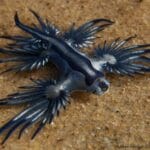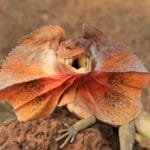Is your bearded dragon acting a bit sluggish, hiding more, and less interested in their usual feast of crickets? Don’t panic! These behaviors might indicate that your scaly friend is preparing for brumation, a period of dormancy similar to hibernation in mammals. This comprehensive guide will walk you through everything you need to know about bearded dragon brumation, from recognizing the signs to ensuring a safe and healthy winter slumber.
Understanding Brumation: Why Do Bearded Dragons Brumate?
Brumation is a natural process for bearded dragons, deeply rooted in their Australian ancestry. It’s a survival strategy triggered by environmental cues like decreasing temperatures and shorter daylight hours, typically aligning with the Southern Hemisphere’s winter months (June-August). Brumation allows them to conserve energy during periods when food and water might be scarce in their natural habitat. While your pet dragon lives in a controlled environment, their internal clock, combined with the temperature and lighting in their terrarium, still prompts this instinctual behavior. football colouring pages messi.
Recognizing the Signs: Is Your Dragon Brumating?
Identifying the signs of brumation is crucial for providing proper care and differentiating it from potential illness. While the intensity of brumation varies from dragon to dragon, some common signs suggest your beardie might be preparing for a long winter’s nap:
- Decreased Appetite: Your dragon may eat less or refuse food altogether.
- Lethargy and Reduced Activity: They’ll likely be less active, spending more time sleeping or hiding in their favorite spot.
- Seeking Cooler Temperatures: They may bask less often and prefer cooler areas within their enclosure.
- Increased Hiding: You might find them tucked away in their hide more frequently and for longer durations.
- Changes in Basking Habits: They might not bask as often or for as long as they typically do.
Preparing for Brumation: Creating a Cozy Brumation Burrow
If your dragon is showing signs of brumation, creating a comfortable and safe environment is essential. Think of it as preparing a cozy winter retreat for your sleepy friend:
- Gradual Temperature and Light Reduction: Mimic natural seasonal changes by gradually decreasing the temperature and light cycles in their enclosure. Consult reputable sources like Reptiles Magazine or The Spruce Pets for specific temperature and lighting recommendations. This gradual shift helps ease your dragon into brumation.
- Clean and Comfortable Hide: Ensure their hide or burrow is clean, spacious enough for them to turn around comfortably, and located in a cooler section of the enclosure. This provides a secure and private space for their extended rest.
- Fresh Water is Essential: Even if your dragon appears less interested in drinking, fresh water must always be available. A shallow dish is recommended to prevent accidental drowning.
Caring for Your Brumating Dragon: A Hands-Off Approach
Once your dragon is brumating, the best approach is often minimal intervention. It’s like letting someone sleep in – you wouldn’t want to disturb them unnecessarily.
- Monitor Weight and Condition: Keep a gentle eye on their weight. While some weight loss is normal during brumation, significant or rapid weight loss could signal a problem and warrants a veterinary visit.
- Maintain Enclosure Hygiene: Regular cleaning is crucial to prevent the buildup of bacteria and maintain a healthy environment.
- Continue Offering Fresh Water: Even if they’re not drinking as much, fresh water should always be accessible.
- Resist the Urge to Handle: Avoid handling your dragon unless absolutely necessary, such as for a quick health check or a lukewarm bath to aid digestion. If handling is unavoidable, warm them up gently under a low-wattage heat lamp beforehand, keep the interaction brief, and be extra careful and gentle.
Brumation vs. Illness: Knowing the Difference is Critical
Distinguishing between normal brumation behavior and signs of illness is crucial. While brumation involves reduced activity and appetite, it shouldn’t be mistaken for sickness. A healthy brumating dragon, while less active, should still be responsive to gentle handling. A sick dragon, on the other hand, may exhibit:
- Significant Weight Loss: More than a typical slow, gradual decrease.
- Respiratory Issues: Wheezing, open-mouthed breathing, or other signs of respiratory distress.
- Discharge: Any discharge from the eyes, nose, or mouth.
- Dehydration: Sunken eyes, wrinkled skin.
- Abnormal Fecal Matter: Changes in color, consistency, or frequency.
If you observe any of these signs, consult a reptile veterinarian immediately.
Waking Up from Brumation: A Gentle Reawakening
As temperatures and daylight hours naturally increase (or as you gradually adjust their enclosure to mimic spring), your dragon will slowly emerge from brumation. This process can take several days or weeks, so patience is key:
- Gradual Temperature and Light Increase: Mirror the natural spring awakening by gradually increasing the temperature and lighting in their enclosure.
- Offer Food and Water Regularly: Even if they don’t show immediate interest, offer their usual diet and fresh water. Their appetite will gradually return.
- Veterinary Check if Needed: Consult a veterinarian if your dragon shows signs of illness or has difficulty waking up.
Brumation in Young Bearded Dragons
Brumation patterns in young bearded dragons (under ten months old), can differ significantly from adults. Some may not brumate at all during their first year, while others might experience shorter periods of dormancy. If your young dragon does exhibit signs of brumation, the same care principles apply: maintain good hygiene, offer fresh water, monitor their weight, and consult a veterinarian if anything appears unusual.
Troubleshooting Common Brumation Concerns
| Problem | Potential Solution(s) |
|---|---|
| Loss of appetite | This is normal during brumation. Ensure fresh water is always available. Consult a vet if weight loss is significant. |
| Excessive sleepiness | While expected, if your dragon seems unusually lethargic or unresponsive, consult a vet to rule out any underlying health issues. |
| Difficulty waking up | Gradually increase enclosure temperature and lighting. If there’s no improvement within a reasonable timeframe, consult a vet. |
| Concerns about dehydration | Ensure fresh water is accessible and consider offering water-rich foods when they start to wake up. |
By understanding and properly managing brumation, you can help your bearded dragon enjoy a healthy winter rest and a vibrant spring awakening. Remember, each dragon is an individual, so observe your pet closely, trust your instincts, and don’t hesitate to seek professional guidance from a reptile veterinarian if you have any concerns. They are the best resource for ensuring your dragon’s health and well-being.















